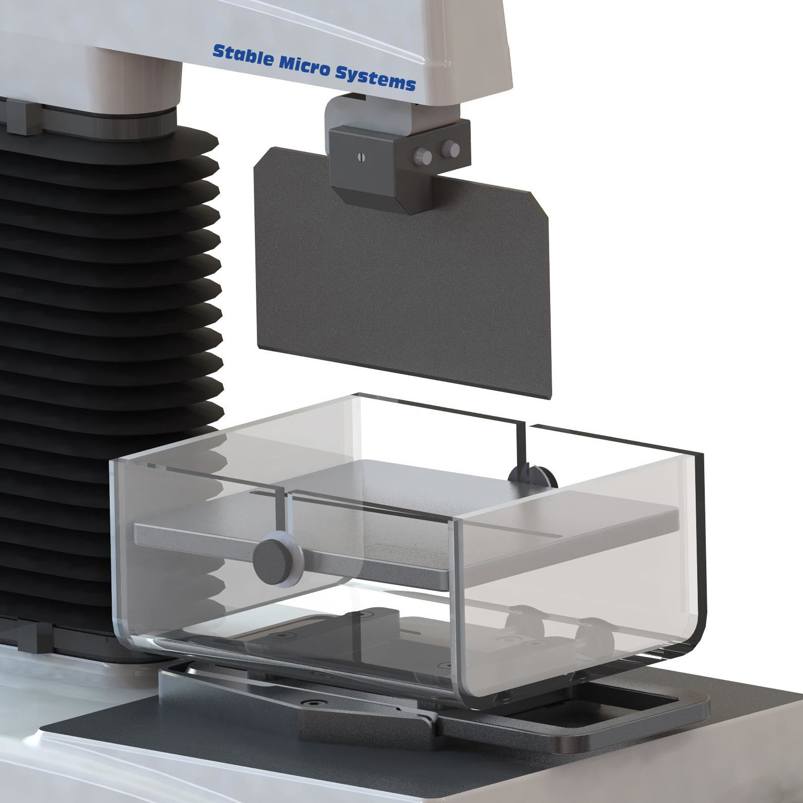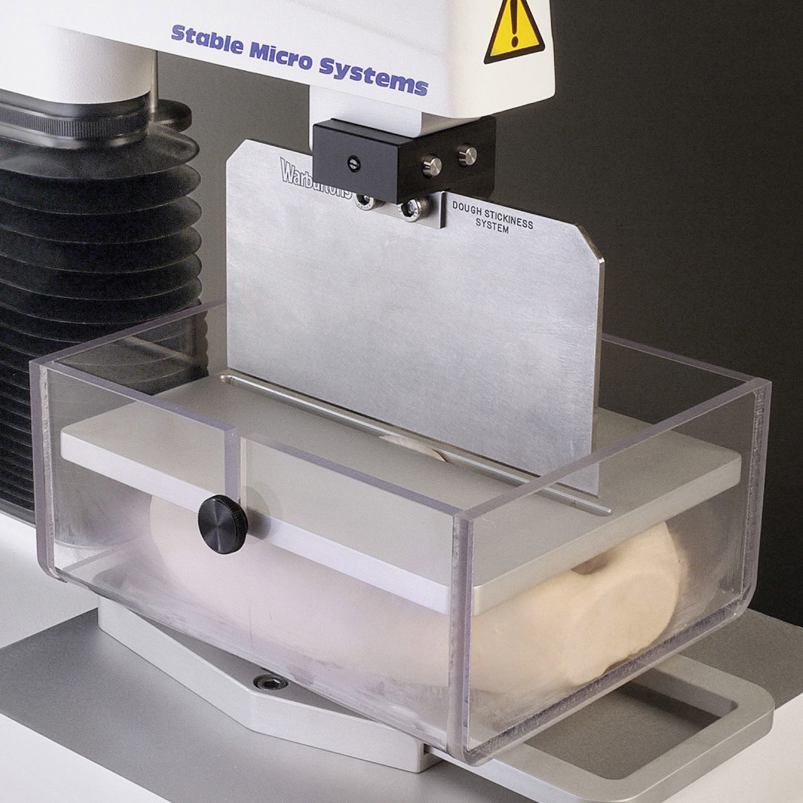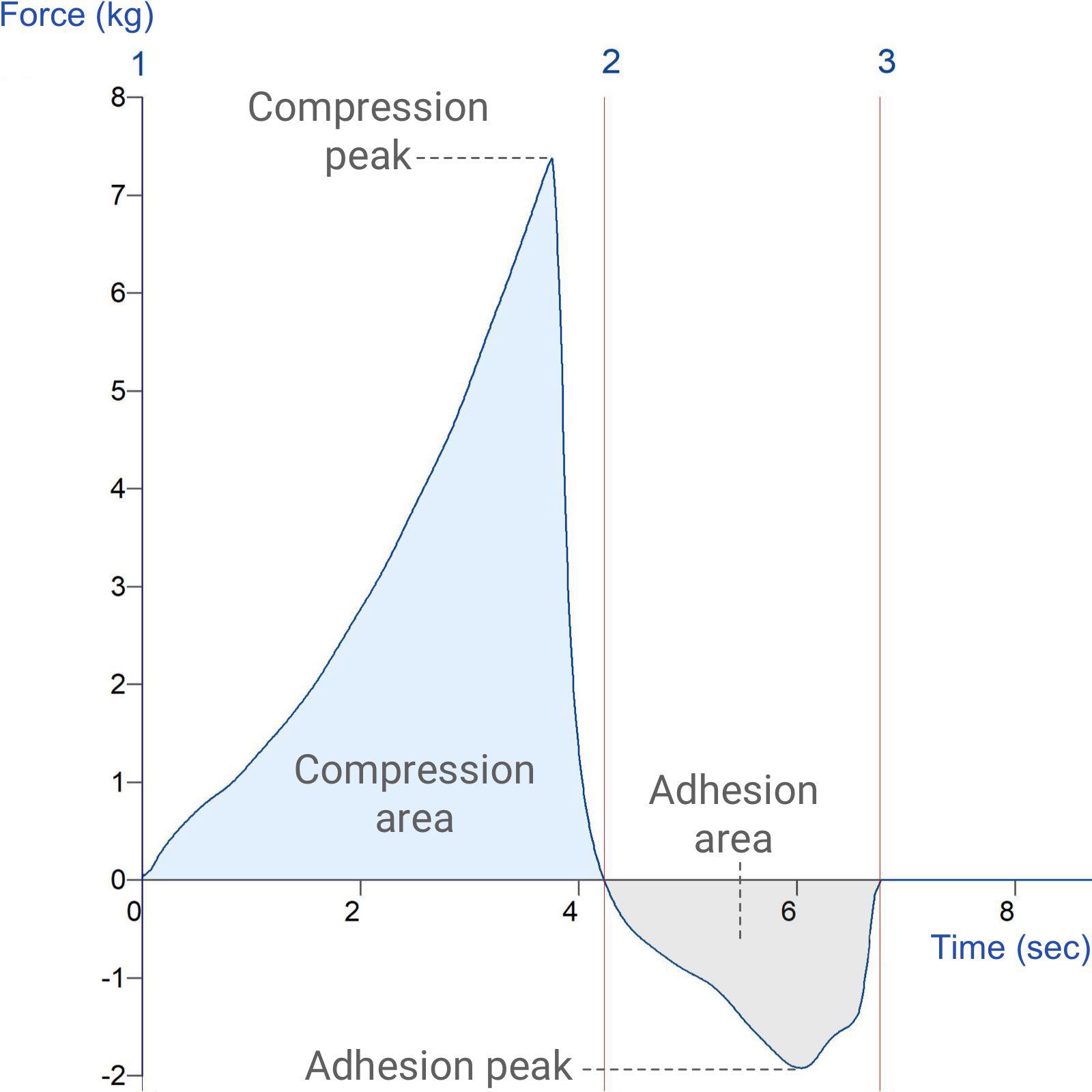Product overview
Sticky dough is problematic in bakeries as it causes progressive build-up of dough smears on equipment, necessitating extra cleaning and leading to waste and unplanned stoppages. Previous test methods for quantifying dough stickiness normally required manipulation of the dough sample immediately prior to testing. This, and exposure to drier atmospheres common in QC labs, introduce rheological changes which reduce stickiness and therefore distort test results.
As stickiness is most commonly evident when dough is subjected to shear, tests should ideally be performed immediately after mixing or processing, e.g. after dividing or moulding. The research, development and engineering team at Warburtons has worked with Stable Micro Systems to develop a sample testing box into which dough samples (of either 500g or 1kg) can be placed quickly and with minimum exposure of the cut surface to the atmosphere. A retaining plate is placed on top of the dough, applying slight compression to the sample.
A narrow blade is driven through a slot in the retaining plate, to a defined distance. This action provides bakers with an accurate assessment of the compression peak and compression area of the dough, indicators of its consistency (firmness/softness). As the blade is withdrawn upwards the adhesion peak and adhesion area are calculated. The higher the peak, and/or larger the area, the stickier the dough.
The Warburtons Dough Stickiness System mimics certain actions carried out in commercial bakeries and is ideally suited to this sector of the baking industry due to the high speed of the test, the ease of cleaning between tests, the minimising of the dough’s exposure to atmospheric variables and therefore the reduced need for temperature-controlled environments.
This attachment is available in two sizes, to accommodate samples of 500g or 900-1000g.
How does the Warburtons Dough Stickiness Rig work?
Ideal sample form
Dough.
Benefits and limitations
- Allows an imitative test to be performed
Optional extras
Additional sample box and restriction plate for 500g system – A/WDSS500B
Additional sample box and restriction plate for 1kg system – A/WDSS1000B
Technical information
Installation
Full installation instructions are provided within the Education Zone of the latest Exponent/Connect software version and on the technical information sheet accompanying this product.
Chemical compatibility
Stable Micro Systems probes and attachments are commonly made from four materials: anodised aluminium (AA6082 T6), stainless steel (316 T), Delrin (acetyl copolymer) and Perspex (polycarbonate).
In general use, probes and attachments made from these materials will be suitable for testing food products and inert non-food materials.
The four materials listed above are not universally resistant to all types of chemicals and as such the compatibility of the probe/attachment material with the product (to be tested) must be established to prevent damage to the probes and attachments. If the compatibility of the product with the probe is unknown to the customer then the chemical information about the product (Material Safety Data Sheet or Product Data Sheet) should be submitted to Stable Micro Systems. Stable Micro Systems will then assess the suitability of the probe/attachment material for use with the product and advise accordingly. If this advice is not sought then Stable Micro Systems will not accept liability for probes/attachments damaged by chemical attack from the product being tested.
Cleaning and maintenance
All probes and attachments may be cleaned in warm (or hand hot) water using a mild detergent. A soft brush may be used but abrasive cleaning aids should be avoided. Stable Micro Systems products should not be microwaved or cleaned in a dishwasher.
Screw threads should be lightly lubricated after drying using a light lubricant, e.g. petroleum jelly, mineral oil. This will aid the fitting and unscrewing of the item. Each component of a probe or attachment should be wrapped separately when stored, to avoid scratching or chipping. This will safeguard against any unnecessary damage to the accessory.



